You absolutely can grow tomatoes in Arizona, and this is your guide doing it!
I'm in Tucson, but you can adapt these tips for growing tomatoes in any hot desert climate.
Tomatoes have two seasons here in the Sonoran desert - spring and fall.
These "would-be summer plants" get pushed to the shoulder seasons in the hot desert, where the summer would scorch them too much.
Disclaimer: This post may contain affiliate links. Refer to the privacy policy for more information.
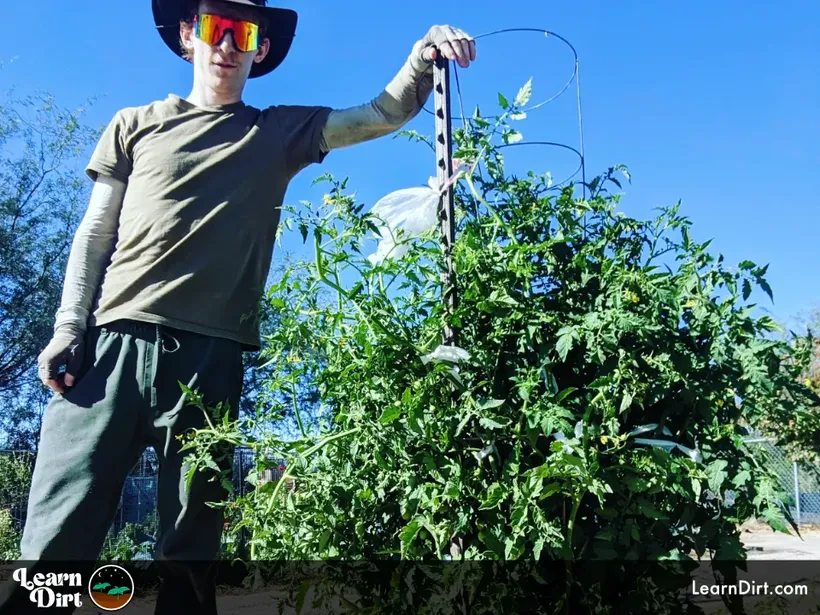
While you can get tomatoes through both the summer and winter in Tucson, both seasons provide their own challenges which may dissuade you.
If you're growing tomatoes in Tucson you can avoid the challenging extreme seasons by growing tomatoes in the milder spring and autumn.
And if you're intent on growing tomatoes through the harsh seasons in the desert, know this:
Winter frosts will blacken tomatoes and kill off lots of foliage. Without a greenhouse or indoor grow lights, you'll be limited to applying and removing frost cloth and hoping for the best.
I've seen it done and it's certainly possible, though I don't mess with frost cloth personally in favor of relinquishing my warm season veggies to the frost when it's time.
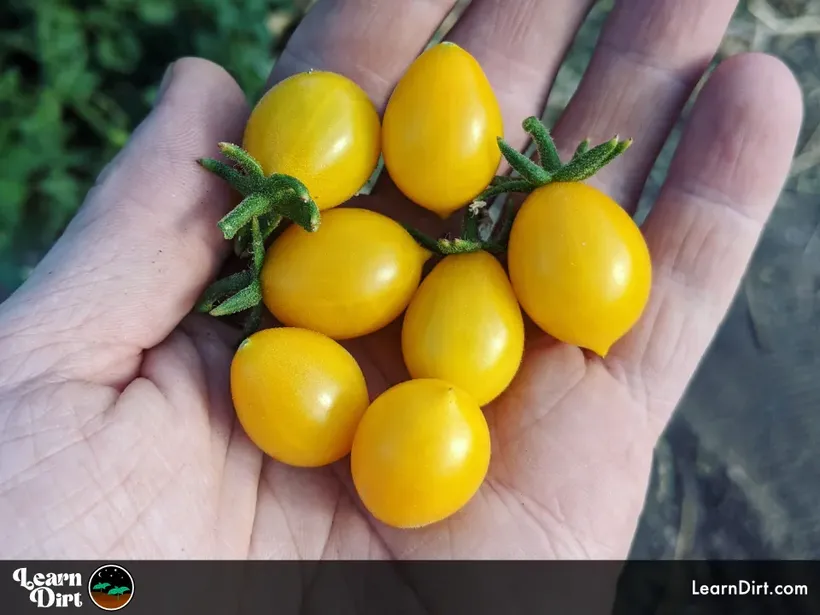
Likewise, you can also get tomatoes through the summer here, even without shade cloth. I've don this in the record-breaking 2023 summer heat. Tucson recorded a 53 day streak of triple digit highs, and July was the hottest month ever recorded.
My tomatoes were almost entirely unphased by the heat, which I credit to the following:
- Surrounded by nurse plants which provided some shade
- Adequate water via irrigation 2x per day near the tomatoes
- Constant application of mulch and chop + drop
- Exceptional quality soil with >10% organic matter content and great moisture holding power
The previous year my soil was not nearly as good, and my irrigation was inadequate. The tomatoes were fried by June and that summer even with much lower temperatures. Soil quality and proper irrigation changed everything.
I would not assume that you'll be able to get tomatoes through Tucson summer heat without shade cloth unless you've done significant work on improving your soil quality. Otherwise, they'll do far better during spring and autumn for you.
Spring Desert Tomatoes
Spring offers the longer planting season for tomatoes, though it's still a shorter season compared to more moderate climates. You'll have to move quick to utilize the time you have.
It may be worth considering early plantings in the spring with some of your seeds to allow for the possibility that a late frost never comes. While this offers the reward of an early start on the spring season (in March or April), there's risk that a late frost will take the crop.
Another considering is your willingness to cover with frost cloth at night. Some gardeners are more than willing to baby their plants with extra layers of protection on frosty nights.
Others have success with early spring tomato protection in the form of walls of water.
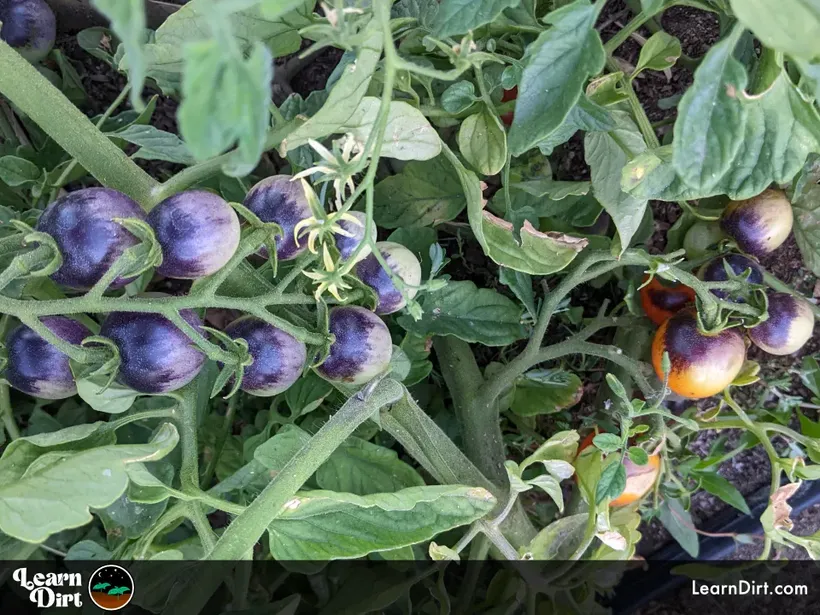
When in doubt, succession plantings starting a few weeks before your average last frost date may offer you the best balance of risk and benefit.
Spring tomatoes are an early treat in the low desert, and can yield better-than-expected results for such a harsh environment. Late-May through June often offer up a bounty of juicy sandwich-toppers that'll surely leave your cooler-climate friends jealous of your early abundance.
Consider using shade cloth in the early summer to extend your tomato season if you want harvests to continue into midsummer.
Fall Desert Tomatoes
For fall tomatoes, I've had success transplanting outdoors in late-September, when the 100F+ days break and you start seeing 90's on the forecast. Shade cloth allows you to put out fall tomatoes earlier in September without having to wait until the cooler October temps.
By mid-December when the 6 weeks of winter begin in the Sonoran desert, tomatoes will start to turn black and die back unless protected from the cold snaps at night. I harvest most of my autumn tomatoes in mid-December.
It may be a good idea to prune back tomato plants when December starts, to allow them to focus more on ripening the fruit than in putting out more flowers and stalks.
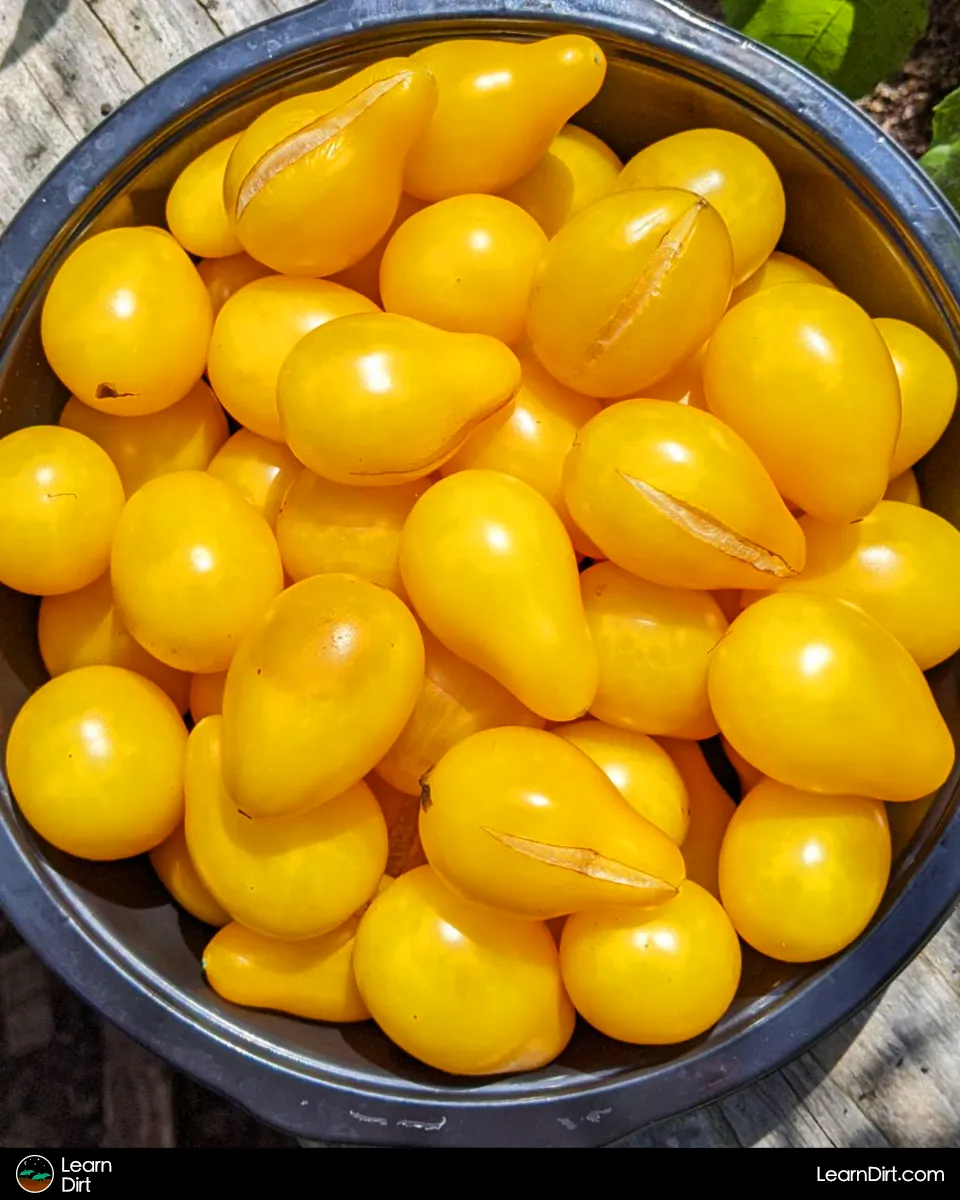
Soil Prep. For Tomatoes
I know I'm not the only one who loves a tasty BLT with those fresh home-grown tomato slices!
To grow tomatoes in the desert, you'll have to start by prepping your soil. This is especially important here because desert soil is such poor quality to begin with. You'll really have to think through how you plan to build, improve, amend, and remediate it.
Where I am in the Sonoran Desert, our soils are highly alkaline, salty, with less than 1% organic matter content. Here it's super important to build good soil to make your land more suitable for growing tomaters.
Test your soil pH, and consider adjusting it if it's not ideal. A good pH for tomatoes is between 6.0 and 6.8.
If your soil is too alkaline like mine, soil sulfur is great amendment for helping to drop that pH to a workable range.
If your soil is very saline from high evaporation (common in Arizona), consider adding gypsum (calcium sulfate) which can displace the sodium in the soil as well as improve soil structure.
Dig Some Cool Merch?
Further, healthy thriving soil buffers its pH naturally, so focusing on soil health will automatically help bring your pH and moisture retention into balance.
Add organic matter to your dirt to improve fertility and capacity to hold water.
Compost, aged manure, shredded cardboard, chop + drop, and leaf mold are all great choices for adding organic matter.
An organic veggie fertilizer like Dr. Earth can help add nutrients to depleted soils and power your tomato harvests.
Transplanting Tomatoes
When transplanting tomatoes, one great approach is to bury the stems.
Because tomatoes readily put out new roots anywhere the main stem stays moist, you can bury a tomato seedling deeper than the transplant's soil line. Be sure to strip the bottom branches if doing so.
Burying the tomato deeper than its original soil line encourages the tomato to put out new root growth along a longer stem area. This, in turn, creates a larger root mass for your tomato.
As you can imagine, this is a technique that may slow growth or yields initially for greater returns down the road. You might consider encouraging more root growth this way in climates with long tomato seasons.
Here in the low desert, our 2 short tomato seasons hardly leave us room to encourage our plants to focus on root growth, though it's worth experimenting with.
Watering Tomatoes
If you've ever had tomatoes split open from inconsistent watering, you know how important consistency is with water. In the desert, thought, water is a scarce resource.
Choose drip irrigation over sprinklers or hand-watering in desert climates, so the water makes it to the root zone fast. This helps you avoid evaporation and also sunburn from water on leaves.
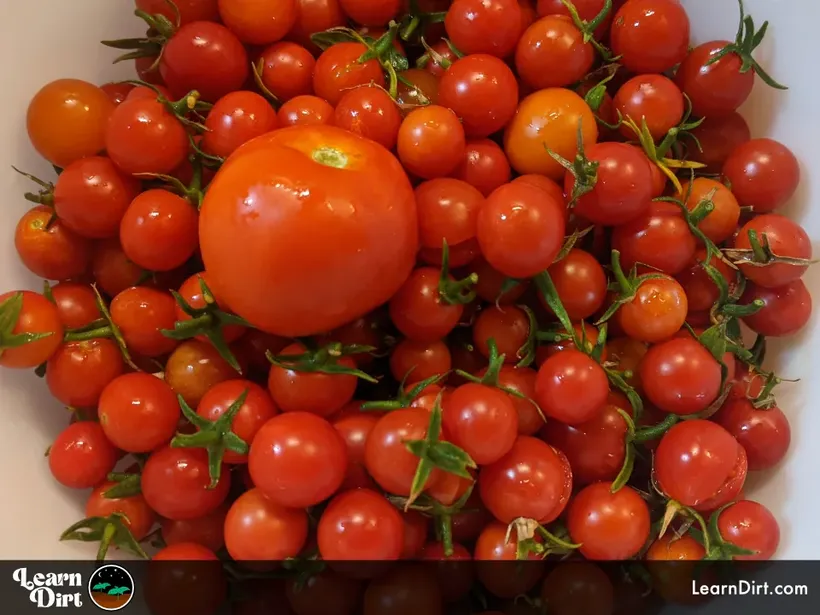
Some of these are split open from inconsistent watering
I run my irrigation once in the morning and once at night throughout the year in the desert. In winter, it runs for very short durations. As the weather heats up, I gradually increase it. I run my drip lines when the sun is down, to avoid moisture loss. I also mulch on top of my drip lines, so the water is insulated from evaporation by a layer above.
Consider also that watering more deeply and less frequency may encourage deeper root growth. This can help them handle the heat and drought of the desert.
Play around with irrigation schedules and timings until you've got them dialed in well and aren't losing a lot of tomatoes to splitting. When tomatoes split from inconsistent watering they tend to get funky much faster and begin to ferment. If they do split and get funky, you can allow the fermentation to continue for seed-saving purposes.
Irrigation is arguably the most important piece of infrastructure for desert gardening. It's consistency will be a big help for growing tomatoes in the desert.
Pest and Disease Control
Thankfully in the desert, fungal issues are scarce. Low humidity does not give mold or mildew much chance to grow on tomatoes or other plants.
That said, tomatoes are prone to some diseases and pests in the desert, so you'll want to take some precautionary measures to protect them.
One of the most well-known tomato munchers are the dreaded tomato hornworm, which can quickly chow through tomato leaves and defoliate your nice vines.
Some folks resort to hand-picking hornworms off their plants, but I'd argue that you're removing a valuable food source for birds, lizards, wasps, and other predatory insects when you do this. By intervening and squashing this juicy food source, you may be doing more harm than good to your ecosystem.
Other folks swear by the use of Bacillus thuringiensis (BT) to kill the larvae, which may be worth a shot.
Truly, though, a balanced ecosystem means striking a balance between "pests" and the helpful predators which eat them. For this reason I choose to focus on shepherding a balanced garden ecosystem, and attracting beneficials by providing their favorite food and shelter.
As mentioned above, fungal diseases such as early blight and powdery mildew are rarely a problem in the desert.
Thankfully here in Tucson the wet seasons (winter and monsoon) don't really coincide with spring and autumn tomato seasons. Still, if there is rain on the forecast it can be prudent to keep your tomatoes defoliated a little if they have lots of leaves lying on top of each other. This opens up the foliage to allow for some good air circulation - key to helping prevent fungal issues.
Varieties
Not every variety of tomato is well-suited for desert growing. Seek out varieties which are heat-tolerant, and reach maturity quickly (determinate varieties).
Some great options for spring tomatoes include Early Girl, Celebrity, San Marzano, and Sweet 100. For fall tomatoes, try varieties like Heatmaster, Solar Fire, and Super Sioux.
Determinate varieties tend to have shorter lifecycles than indeterminate varieties, which makes them a great choice for desert tomatoes. It's worth noting, though, that determinates bear most of their fruit at once. This contrasts indeterminates which often bear fruit continually throughout the season.
This makes it easier to get tomato crops in during the shorter spring and autumn seasons in desert climates. You'll just want to make sure you have a plan for using a ton of tomatoes all at once. Options range from canning sauce, dehydrating, freeze-drying, or fermenting, selling, trading, and gifting.

they will positively take over a Tucson garden and become a weed!
Once you let tomatoes into your yard
you may never get rid of them! (a nice problem to have)
If you do choose indeterminate varieties, make sure that you start them indoors and raise them for at least 6 weeks to get a head start on the season. You'll need it if you want to grow a real monster like this cherry tomato tree I grew in autumn:
When in doubt, grab a variety pack so you can try a number of different tomato varieties and see which ones you like and which ones grow well in your climate. Experimentation is so important in the garden!
Trellising Tomatoes
Tomatoes honestly have an obnoxious growth habit IMO. They're technically vines, but they don't have tendrils or really any ability to climb on their own. They kinda just... lay there.
If you let them lay on the ground, much of the fruit gets eaten or rots.
You'll see gardeners trellis their tomatoes in all sorts of different ways to get them up off the ground. The world of tomato trellising is full of creative ways to keep these weird things growing in the direction you want.
Utilizing Tomato Cages
The cherry tomato monster shown at the top of this article was grown inside 2 tomato cages. One had to be stacked atop the other in order to gain the height needed to support the beast.
For this reason, I don't suggest using standard tomato cages for larger indeterminate varieties such as the cherry tomatoes I grew. Stick with smaller determinate varieties for the tomato cages you find at the nursery. Or grab some taller cages that will support larger plants.
Growing Tomatoes Up Stakes
You can tie your tomatoes to stakes, T-posts, sticks, or conduit to get them up off the ground quickly.
Be careful your ties don't cut into the vines by using thin strips of plastic shopping bags or pantyhose as ties, or some elastic cord.
Growing Tomatoes on Strings
This method removes the stakes or cages around your plant which may improve your access to the fruit.
Strings are a common choice for growing tomatoes in greenhouses where there is a roof to hang from. Likewise, indoor tomato cultivation may utilize string hangs if their position will not change.
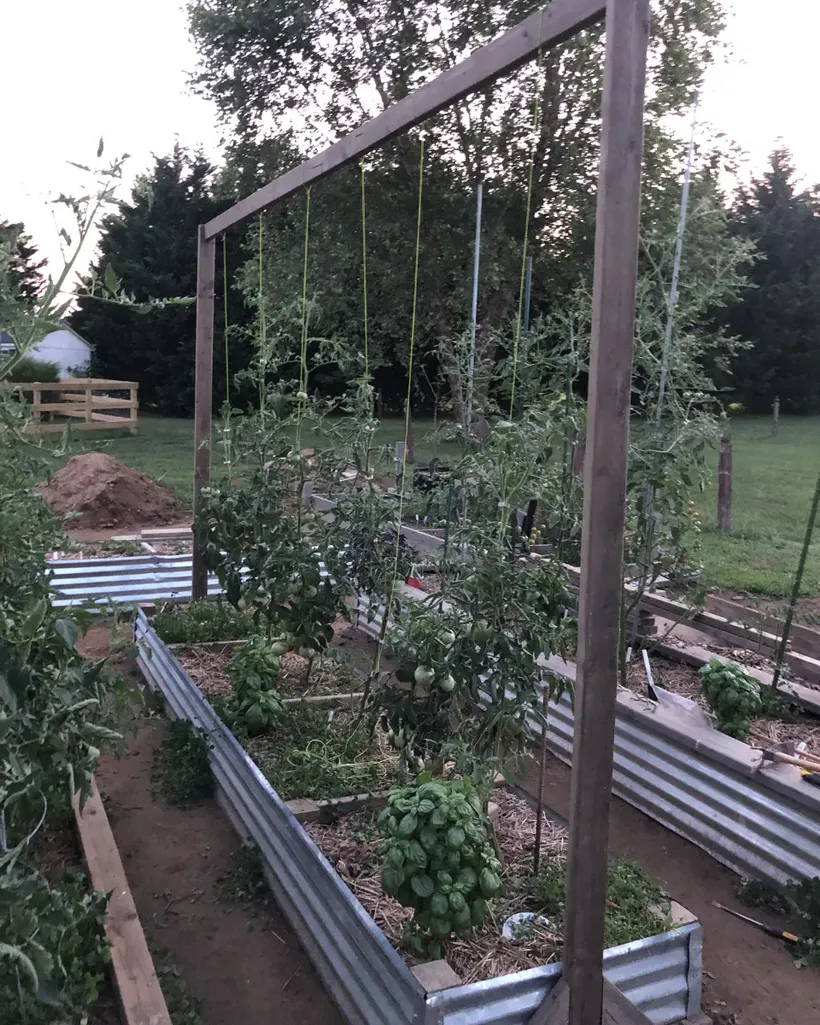
If you've got a lot of plants in a greenhouse, tomato string rollers are a simple and efficient options.
Final Words...
Desert tomatoes may seem unexpected, and definitely require you to think and do things differently from other climates.
That said, if you plant for it, pick your varieties well, start them early indoors, and get your soil and water right, tomatoes may end up being one of your most prolific weeds. I literally cannot get rid of them in my desert garden if I try! Tomato volunteers pop up like moles in my compost, my seedling trays, and my garden regularly.
Have any tips or tricks I missed? I'd love to hear about your experience growing tomatoes in the desert down in the comment section.








![Black Dirt Live Again [Blue]](/media/product_images/black-dirt-live-again-[blue]-sticker_260x260.png)
![Black Dirt Live Again [Green]](/media/product_images/black-dirt-live-again-[green]-sticker_260x260.png)
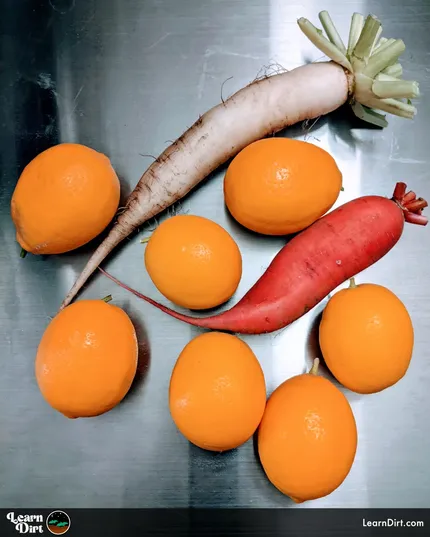
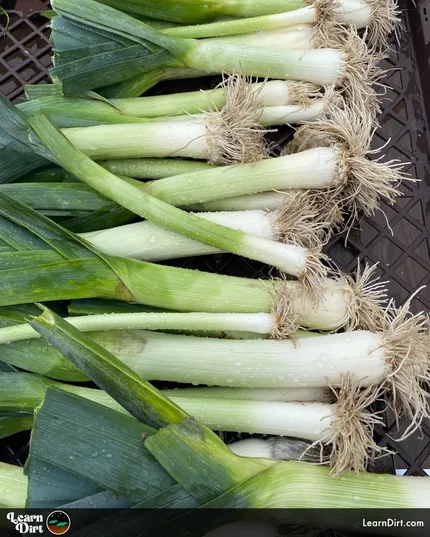
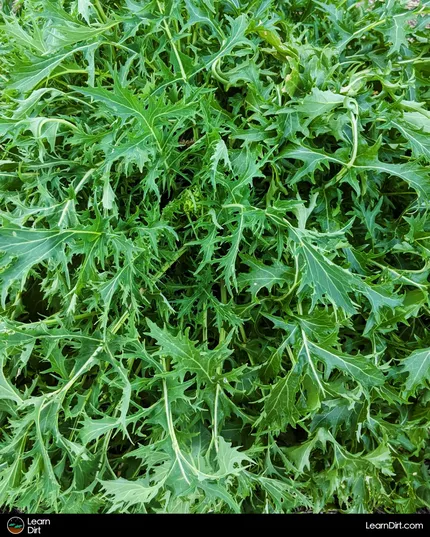
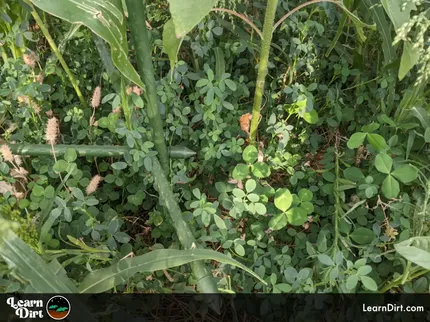

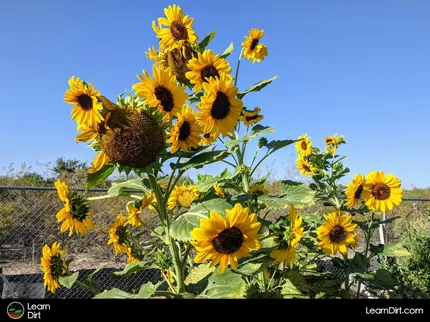
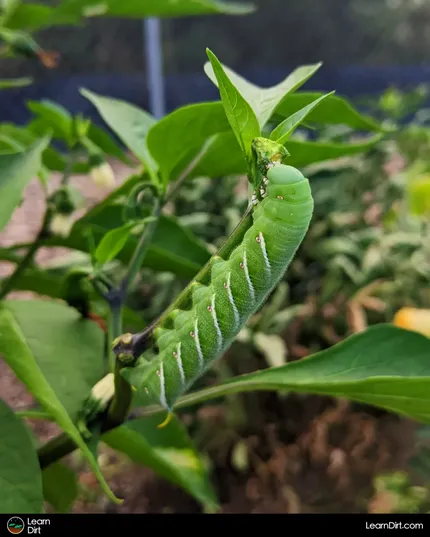
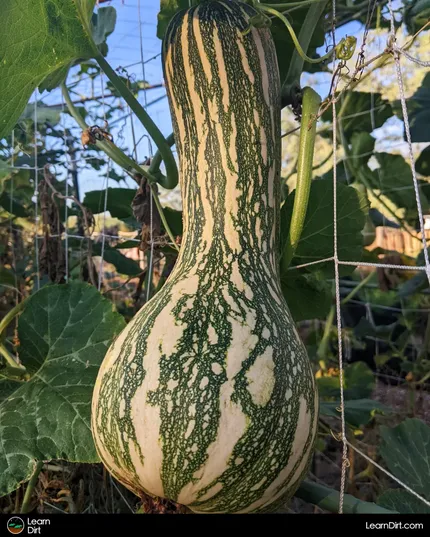
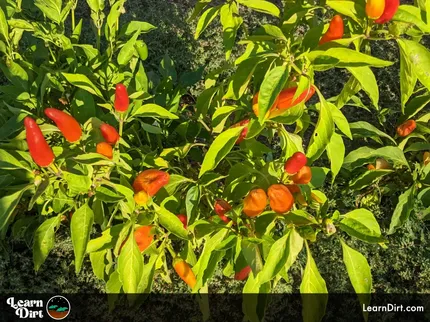
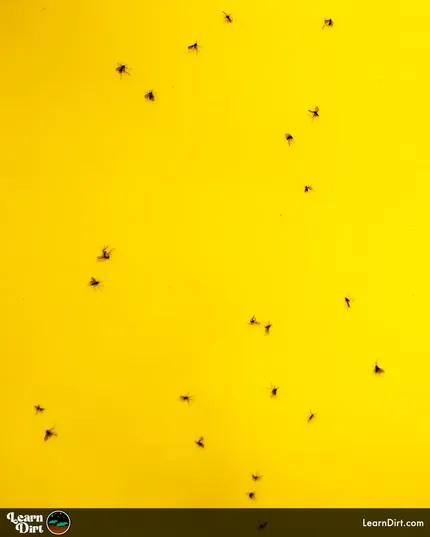
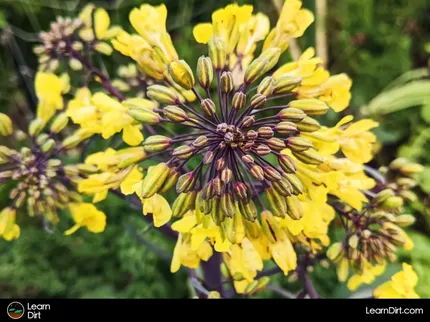
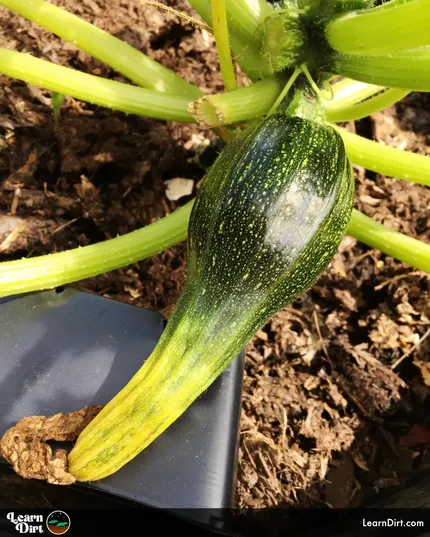



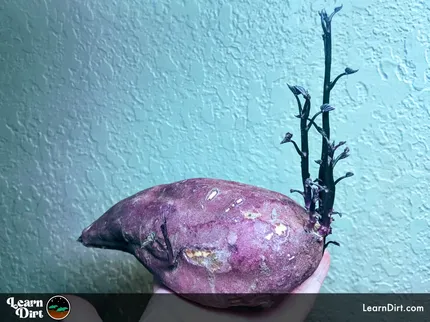
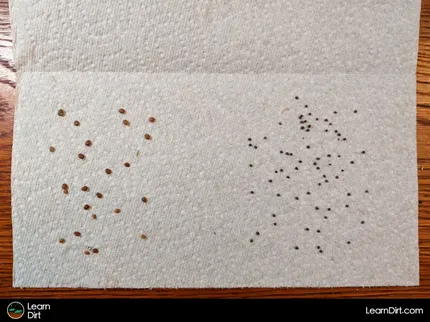
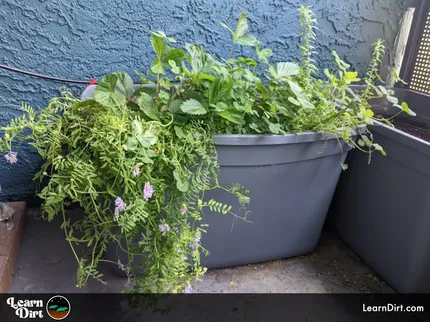
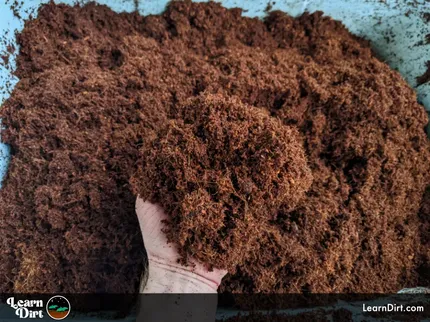
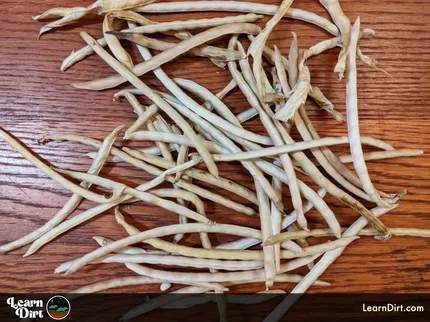
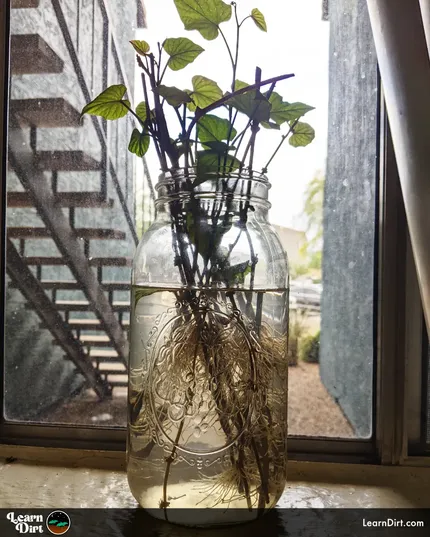
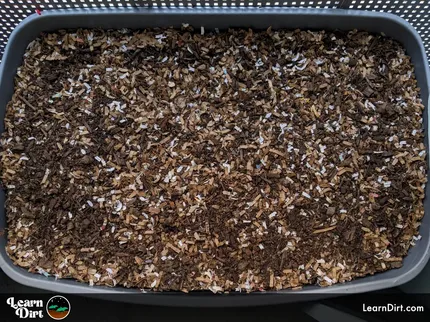
Leave A Comment:
Under construction, please check back soon!